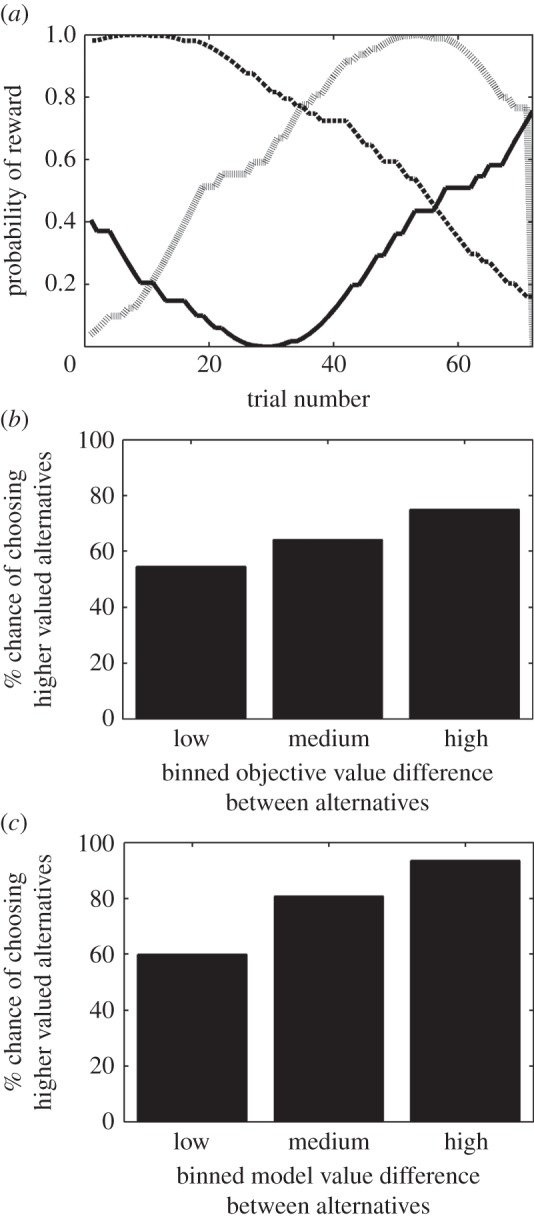Figure 2.

(a) Example of the reward contingencies used in the task for each of the alternatives (shown in different line types) over one block of trials. (b) Percentage of trials participants choose the objectively higher-valued alternative, binned by the difference in objective values between the two alternatives presented on a given trial. (c) Percentage of trials participants choose the subjectively higher-valued alternative, binned by difference in model-predicted values between the two alternatives on a given trial.
